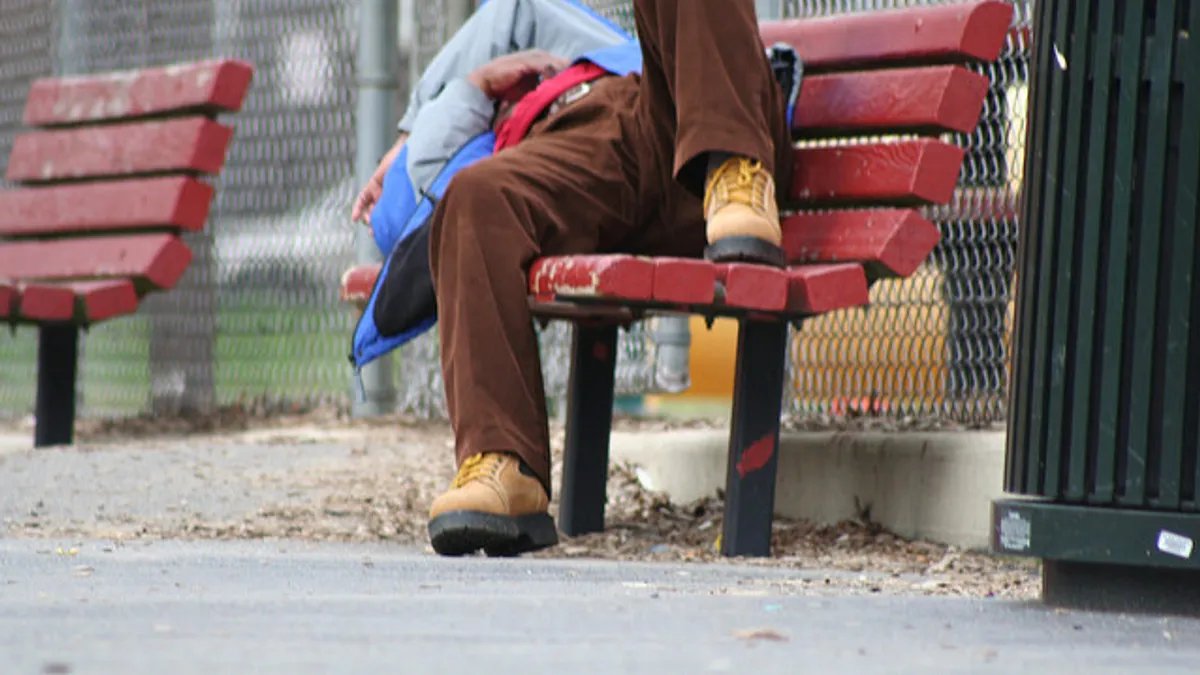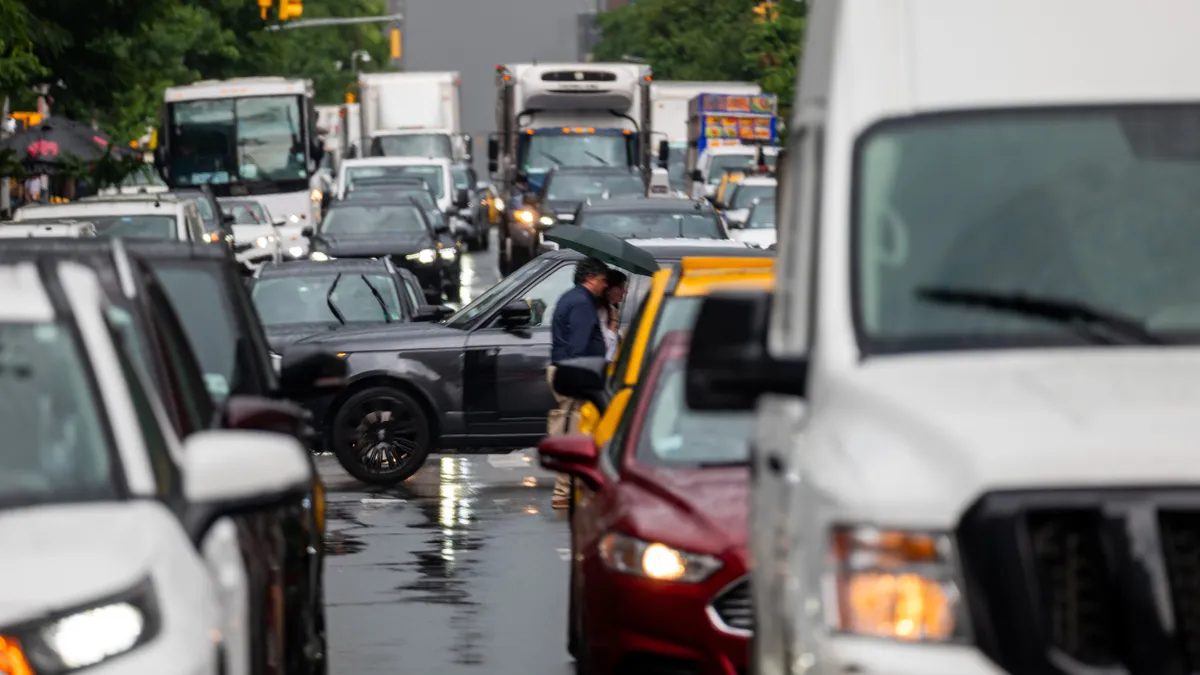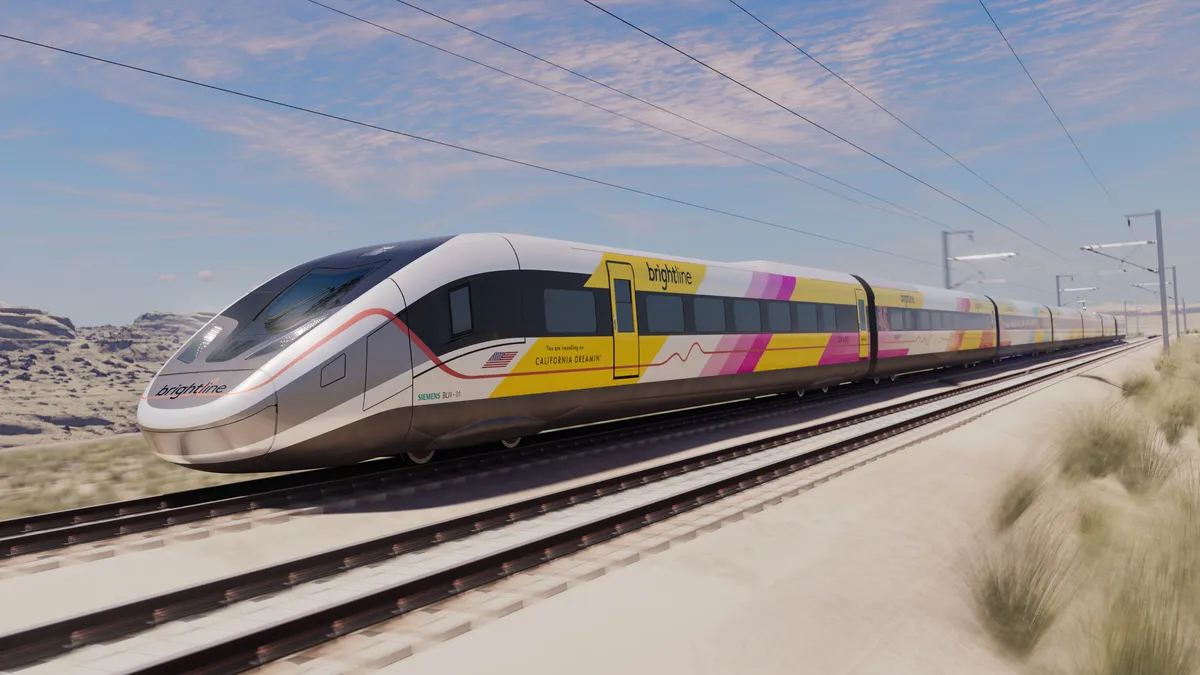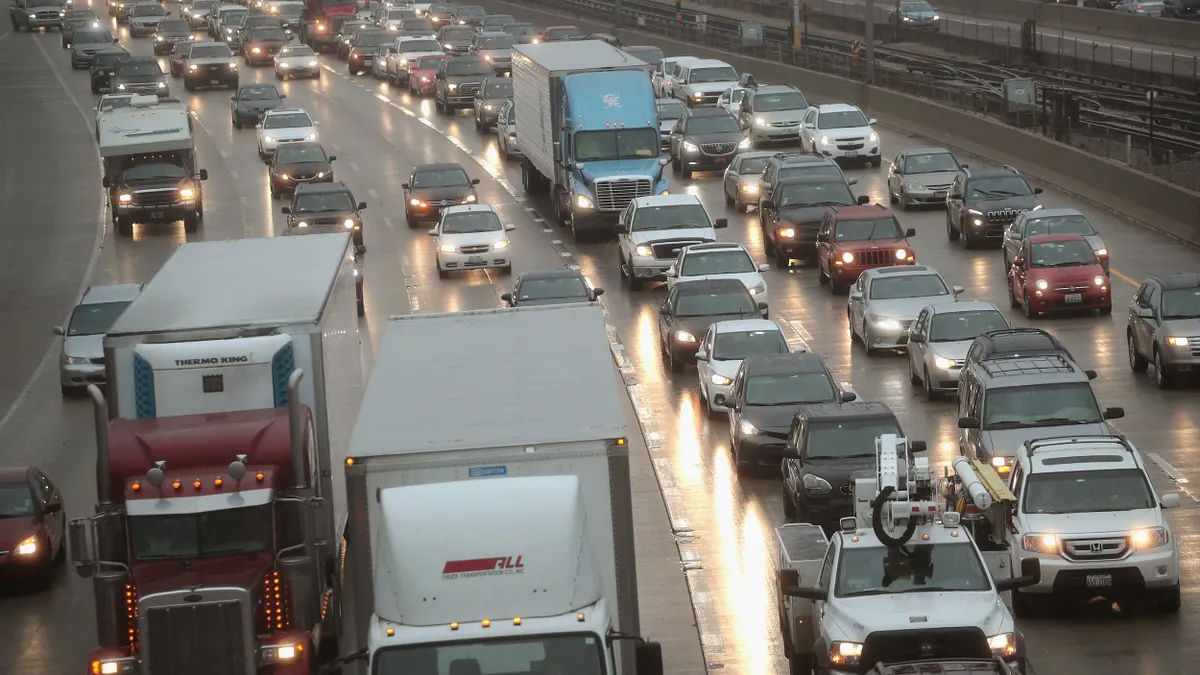The Twin Cities' Metro Transit eliminated service from 2 a.m. to 4 a.m. on the light rail's Green Line this week, replacing the service with buses. The action has re-sparked a debate many cities face: What, if anything, can be done about people experiencing homelessness who use trains as a shelter?
The overnight Green Line service was not the only quarterly alteration Metro Transit made to schedules. Numerous routes were altered or eliminated for reasons including driver shortages, ridership or "other factors," the website states.
Employees have asked for out-of-service time for Green Line maintenance since the line began operating five years ago, Metro Transit Public Relations Manager Howie Padilla told Smart Cities Dive. It allows them to safely perform maintenance tasks without constantly checking for trains or repeatedly turning off and on the voltage to the overhead catenary system.
But advocates worry the two-hour service disruption will displace homeless people who use the rail cars as shelter. The Green and Blue Lines collectively served as the second largest homeless shelter in Hennepin County, of which Minneapolis is the county seat, on certain nights during cold snaps last winter, according to a police report cited by The Star Tribune.
Metro Transit has been aware for years that homeless people use its vehicles for this purpose. But the agency emphasized that "a train seat is not an adequate, dignified substitute for a bed. We're a transit system — we don't have bathrooms, beds, running water and some of the [social] services these folks need," Padilla said.
The issue of homelessness and what to do with unsheltered individuals occurs in "almost every city," Vice President of Programs and Policy for the National Alliance to End Homelessness Steve Berg told Smart Cities Dive.
"I am positive that homeless people sleeping on the train would rather be in a place designed for human habitation," he said. "But is there an alternative that's better? People sleeping on the train might believe that's the best that exists for them."
The only solution is to perform outreach to get these individuals properly housed, Berg said.
Homeless advocates encourage cities to bring together discrete departments to collaborate on greater solutions rather than put the entire responsibility onto one group. "Something like this needs to be part of a larger community solution about how they're dealing with the problem… rather than the transit system trying to solve this by itself," he said.
Metro Transit agrees.
"While Metro Transit isn't the solution for homelessness, we certainly want to be at the table. We want to be part of the conversation and do what we can to help anybody who needs our help to connect to services," Padilla said.
The agency works with community partners on this topic, most notably through its Homeless Action Team (HAT), formed in September 2018. HAT is a group of four officers and two sergeants within the Metro Transit Police Department whose sole duty is to seek out and make contact with unsheltered individuals riding transit overnight to help them connect with supportive services.
HAT members are trained outreach workers who work overnight when the greatest number of unsheltered people ride the region's transit. The training covers best practices for serving homeless people on transit because "it's a different and unique problem versus what cities have. We thought we needed to have something that was meeting people where they were," Sgt. Brooke Blakey of the Metro Transit Police Department’s Homeless Action Team said.
"We ask people we encounter on the train if they need services, what those services look like and we also have some dedicated space within our shelter system… to get them a few minutes of respite before we start trying to plug them into the services," she said.
HAT's partners in the Minneapolis and St. Paul area provide those shelter spaces when homeless people have to leave trains that go out of service at the end of the night. The work is especially pertinent during the winter to avoid leaving riders outside in the cold.
But not every homeless person wants help at the time of outreach. Some people have had bad experiences at shelters or don’t feel safe there, so they won't accept a shelter bed even when offered one. Other people have substance dependency or mental health disorders, animals or non-traditional family structures that preclude them from staying in shelters with strict entry guidelines. Some already have housing vouchers from other programs but they weren’t able to be placed.
The variety of situations means "it's about trying to find the appropriate services because there's not a one-stop shop," Blakey said. "We have to continue to build relationships with them and make sure we're offering them services they feel they need and offer them long-term sustainability."
During its nearly one year in existence, HAT and its partners have helped 42 families — more than 100 people — get into housing.
Metro Transit did replace the canceled rail service from 2 a.m. to 4 a.m. with bus service, but homeless individuals tend not to camp out in buses because drivers discourage it. The agency anticipated it would encounter some pushback for discontinuing Green Line service for two hours, but it stands by the decision and its homelessness outreach.

















